Here in Duluth, MN, time outside is precious. Summer is short, while winter is long and at times brutal. It seems the transitional seasons of spring and fall never got the memo that they’re supposed to last three months. No, around here, we have winter and summer, separated by a couple weeks each of spring and fall. Despite our abbreviated summer, we make the best of it. When it comes to outdoor beautification, strangely, “ponds” seem to be a thing here…at least, more than I would’ve expected.
Ponds All Around Me
My neighbor has a prefabricated pond in a state of disrepair literally out the side entrance to my fishroom. My son Ethan and I tried to work on it last year, but ran into numerous problems, including some broken valves that caused the fountain to run at the full-bore setting:
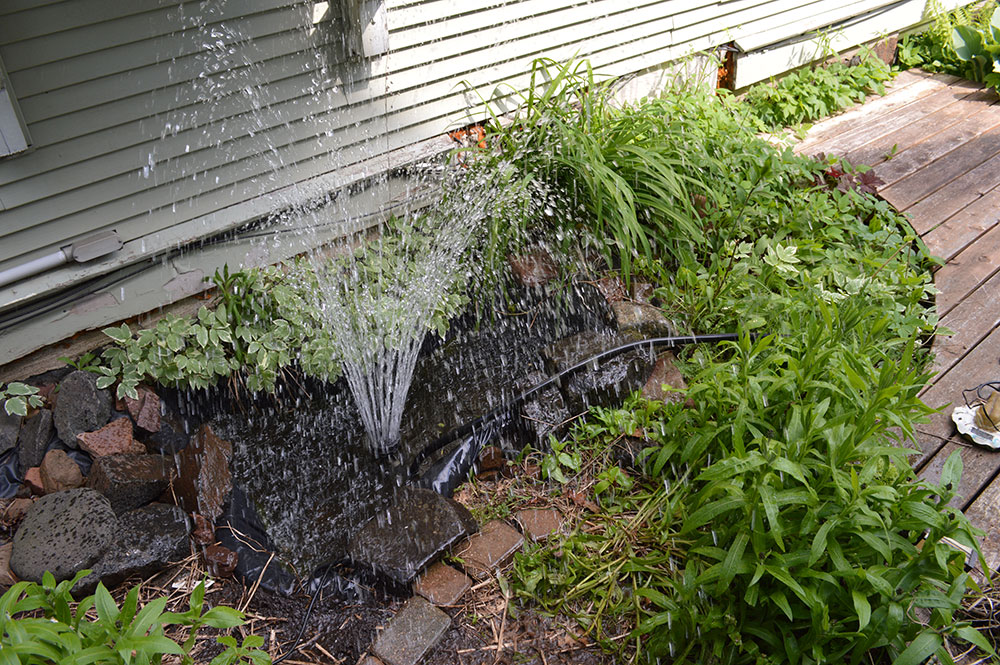
Hilarity ensued when we plugged in a pump in my neighbor’s pond and discovered that the valve that regulated flow was broken in the wide-open position.
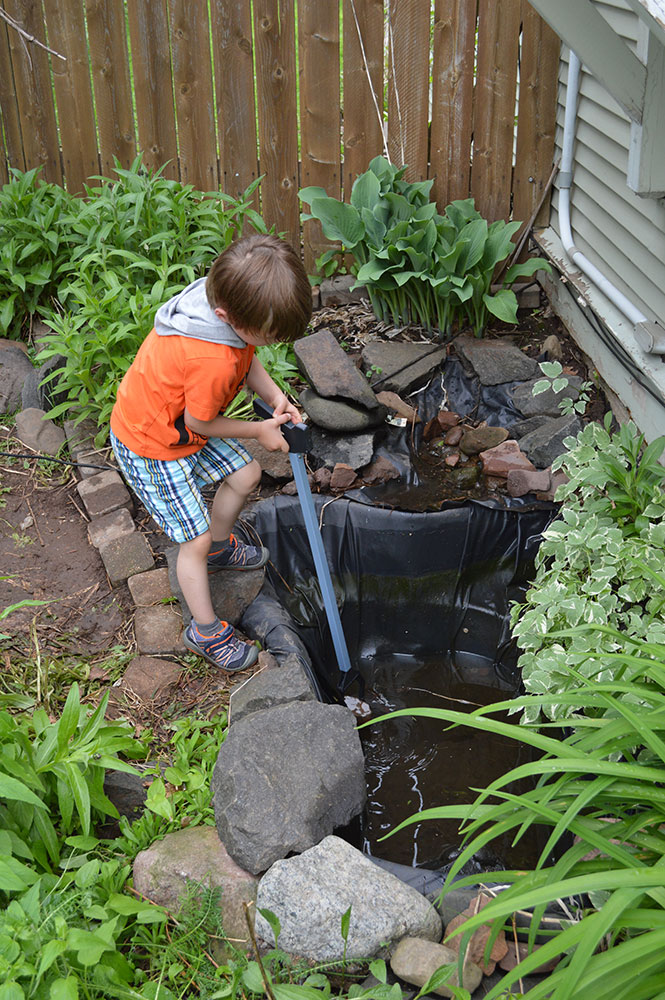
My son Ethan helping empty out the pond; I later discovered that the liner of the waterfall in the background stopped short of the pond, effectively diverting pond water into the ground. And this year, I also found that out it’s riddled with holes! It’ll be a while before I show off the restoration of my neighbor’s mosquito farm.
My fellow marine fish breeder here in town keeps a very successful container pond during the summer, and his neighbor down the hill also keeps a koi pond that was unfortunately raided last summer by a mink or otter (we’re not really sure which). Both of these pond-keepers have the additional good fortune to have an idyllic creek running through their backyards, which, as you can probably start to guess…is the outflow of two more ponds in the cemetery up the hill.
Water is everywhere in Duluth, MN. I’ve run into ponds out shopping garden sales at people’s homes. The entire lower floor of our main independent local fish shop, World of Fish, is filled with hundreds of gallons of pond fish, koi and goldfish, year-round.
Another massive, man-made pond is found in the base of a valley and is just a quick walk over the hill in a nature center. Its outflow is the continuance of one of the many trout streams and creeks which flow through our city, ultimately ending their steeply tumbling journeys at the city’s edge on the shore of Lake Superior. For a person who loves fish, fishing, and really doesn’t like the heat and humidity of Florida in any season, Duluth is a good compromise.
Geographical Constraints of in-Ground Ponds in Duluth
Duluth is a city built on a hill, and it’s been called the San Francisco of the Midwest (Tyler Albrect, a native of the San Francisco Bay area, reluctantly conceded that we’re no San Fran, but he can see where people would draw the comparison). Why do I bring up the hillside nature of our city?
Well, there’s a lot of rock. I have a massive bolder in my front yard that isn’t going anywhere without heavy machinery — it’s probably been there since before people were here. On another sloped part of our front yard, the smooth gray backs of stone beasts break through the grassy surface of our lawn like breaching whales. I bring this up, because, ironically, even my wife has suggested that a pond might be a nice landscape feature (spousal permission for outdoor aquatics, you can hear my elation, right?). But if we were ever going to install a “true” in-ground pond, we might very well have to break out the dynamite, or at least call in some miners from the Iron Range to help us deal with our abundant stone.
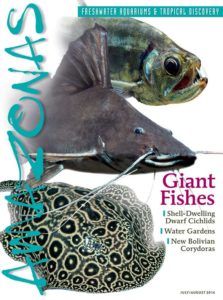
Rachel O’Leary’s article “The Outdoor Aquarist” appears in this issue – Click cover to order this back issue for your AMAZONAS collection.
Temporary Pond Solutions
Not every pond needs to be a permanent feature, and just like I might suggest that a new reef hobbyist maybe not make his first reef aquarium 2000 gallons, there are merits in starting small. Rachel O’Leary’s article The Outdoor Aquarist (AMAZONAS Magazine, July/August 2014) came too late that year for me to do much other than dream: while I was inspired, it’s not uncommon for our first snowfall to be here by October. By May 2015, O’Leary’s story was fresh in my head again, and I was off searching the Internet, bringing back video upon video of container ponds to inspire all of you…and myself.
Amassing Supplies
The intersection of marine fish breeding and container pond-keeping isn’t something I could have fortold. Years ago, I had purchased a few MacCourt 7″ Whiskey Barrel Planter Liners, but not for container ponding; instead, it was to test them as possible “black round tubs” (BRTs) that are often the basis for marine fish larval rearing setups. I never used them for marine breeding, but I moved them from Chicago to Duluth, and eventually I used them for holding molding sand while making DIY man-made reef rock. For whatever reason, it is downright easy to find these shallow, half-depth liners at the big-box store garden centers, but in all my years, I never found the full-size ones! The Internet to the rescue: I found MacCourt’s 15″ Whiskey Barrel Planter Liners on Farm & Fleet’s website; in short order, I had my coveted liners!
Even more strangely, who knew that the cut-in-half whiskey barrels are both seasonal and considered “out of style”? I found out the hard way when trying to find them in June, 2016. Yes, I was already behind “whiskey barrel season”! It took a 60-mile drive north to find a store that had any in stock, and I brought the full-size liners with me.
Having the liners before the barrels, and bringing them with me when shopping, was important…very important. For, you see, the liners don’t fit just any whiskey barrel. The more attractive, “new”-looking ornamental “Whiskey Barrel STYLE” planters offered by some stores won’t fit the MacCourt liner; they have little wooden joints at the bottom, but even with those removed, it’s not a good fit. The Oak Half Barrels are what MacCourt’s liners were designed for, but since the barrels are literally sawed in half, there is some variability in the height of the barrel itself. I should also mention that, at least up here, the quality of the barrels varied widely, with many falling apart due to rust from years of use. I was lucky enough to try my liners in at least a dozen barrels and find a couple that fit.
One of the more common minerals up here is a gray basalt, which I’d collect as I came across it. Marginal and floating pond plants are actually regularly stocked at one of the seasonal garden centers in town, along with the greenhouse at the aforementioned LFS, World of Fish. During my regular garden shopping, I picked up plants, which I easily kept alive in one of the half-depth liners I had on hand. Eureka, I was already running my first container pond!
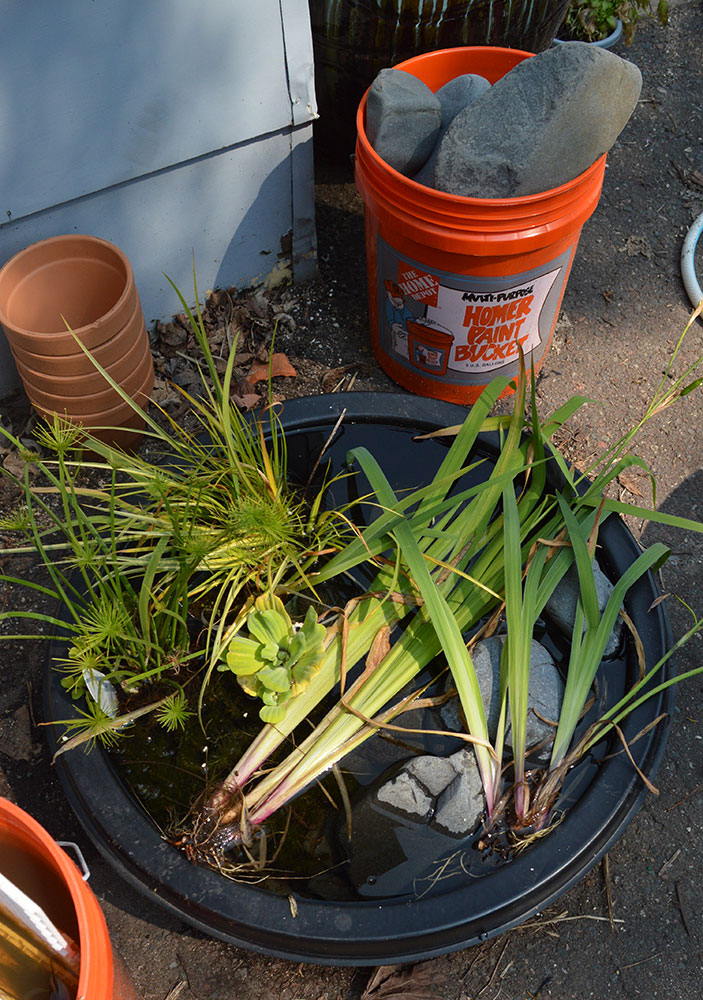
Hardly a thing of beauty, but plants and water in a shallow whisky barrel liner turned into a pond I’d run all season!
A Location and Power
Now, I had a few ideas in mind for where I might place some container ponds, and the space along my garage proved to be a good blank canvas for a first year of container ponding. The ground is level, flat asphalt. Being alongside the west side of the garage, you’d think it would overheat in the afternoon, but a large hill and the shade of a couple maple trees means that there are never more than a couple hours of direct sunlight at midday, and that’s about it.
The garage location had a downside: there wasn’t any external electricity on the garage. I looked into running the wiring and setting it up properly; it probably would’ve cost roughly $100 as a DIY project. But, hey, I noticed a place along the base of the siding where rodents had chewed a small hole when they were stealing bird seed a couple winters back. Turns out I was able to run a heavy duty extension cord through the rafters of my garage and over near the hole. As long as I kept the ponds near the hole, I could even feed cords into the garage through the hole, keeping all the electrical connections nice and dry.
Commence Ponding!
Sadly, most of June and July slipped by…and it wasn’t until early August that I finally got around to working on my ponds!
I had a couple ideas for my outdoor container ponds. First and foremost, I had been bitten by the bug of keeping tropical aquarium fishes outdoors. I’d seen betta breeders just a couple hours south of me using our warm summers as an excuse to grow out hundreds of wild-type bettas in backyard container ponds, so one of my ponds was going to be very low-key: simply a pond full of plants, with a wild betta species, and let nature run its course.
The other pond I envisioned was more complex. I had a few of the shallow, half-depth liners on hand, and they nested perfectly into the full-depth counterparts. This gave me all sorts of ideas about false bottoms, hiding equipment, and filtration. But I lacked any sort of battle plan on how to execute what I was thinking about.
A Water Test
One of the first things I tried was nesting a shallow liner inside a full-depth liner, and only filling the shallow one. I quickly found out that, while watertight, the shallow liners were not designed to be “suspended” in the whiskey barrel under the full weight of roughly 80 pounds of water. No, it seemed that you’d never really be able to run one of these shallow liners as a pond liner unless the area underneath was built up to support the bottom, perhaps with gravel or similar.
But that wasn’t really my main focus anyway; the false bottom premise was.
Inspiration: The Shelf
Aware that wildlife can cause problems for pond fish, I had been thinking about ways I could offer them some protection and refuge should a racoon, cat, mink, bird, snake or whatever be lurking about looking for a meal. I remembered the Penn Plax Tank Terraces that I so loved as a kid (hey, they still make them!) and it hit me: instead of a false bottom, what if I used part of the shallow liners to create a suspended shelf, under which fish could hide whenever they wanted?
Having multiple shallow liners to play with, I then turned my attention to one that had been dragged across the pavement while full of sand. This was repeated over the years, and had worn through the bottom in a couple spots.
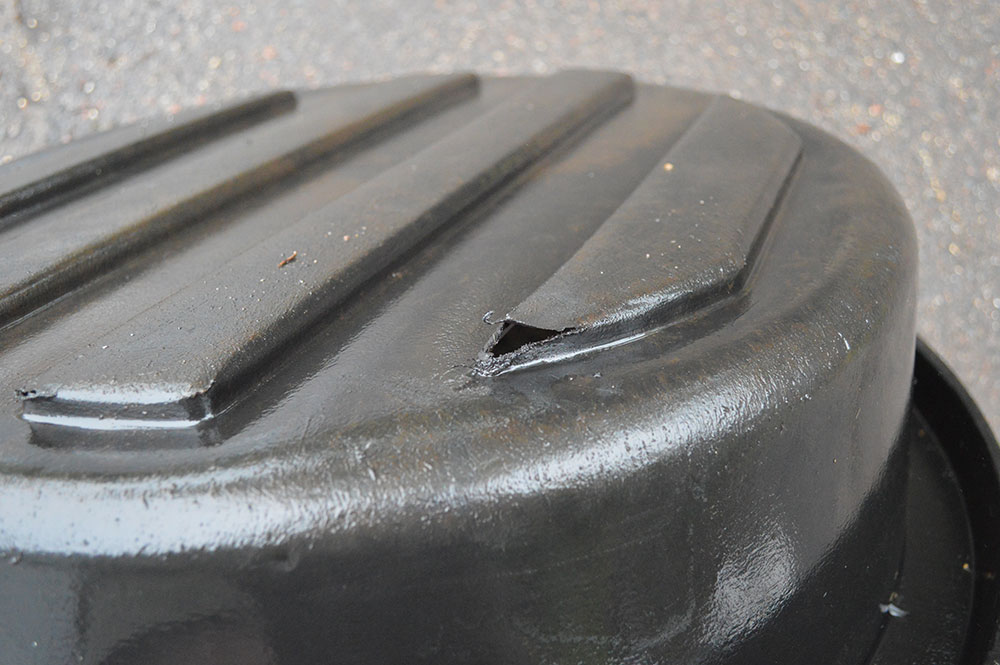
This old shallow liner had bottom damage—a perfect candidate for further modification and experimentation!
Creating a Suspended Shelf in my Whiskey Barrel Pond
My plan was to cut away a portion of the shallow liner’s bottom. The following pictures show the process of how it worked and evolved.

Easily sacrificed, I applied the kitchen shears and started to cut away portions of the bottom of the liner.
So far, things were looking promising, but I didn’t want to look at fish in the pond through just a couple slits in a false bottom. So I kept cutting…
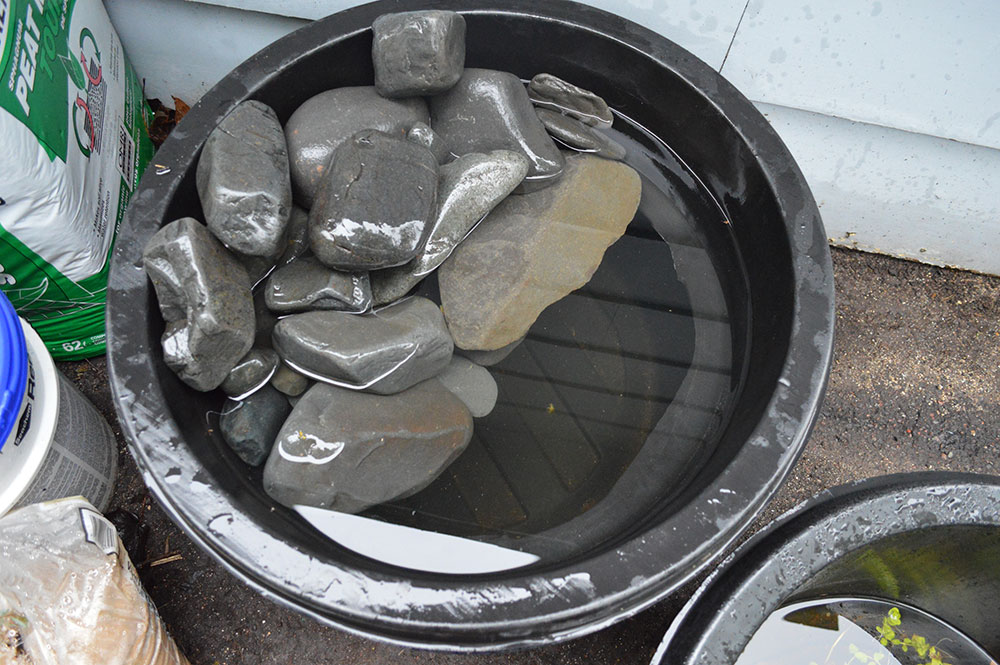
Two snips with the shears, and I had a bigger viewing area. The shelf sagged a little more, but not much.
I was making progress. Removing that strip of material didn’t change the dynamics of the shelf much, but I still had a bit of a “rim” running around the viewing area. I took out all the rock, and I kept cutting…
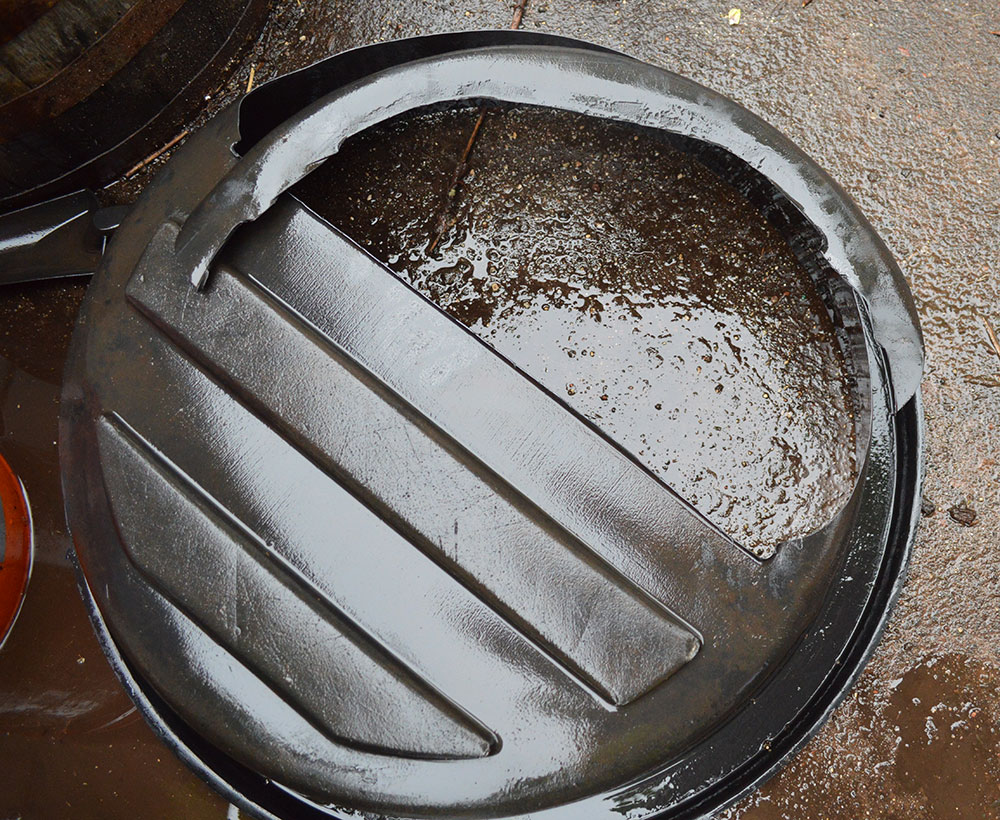
I removed more of the “rim,” the leftover “bottom” of the liner that was visible in the front of the pond area.
Unfortunately, before I had placed a single rock back on the shelf, I realized I had crossed a line of sorts. Removing that extra material allowed the vertical side to flex, no longer holding its shape:

Note the buckling along the inner liner at upper right. The ridge/rim of material had been helping this side of the liner keep its shape…and I removed it!
I certainly wasn’t happy with this distortion in the inner liner, so I kept cutting…
I basically wound up cutting the shallow inner liner in half. I felt it would still easily suspend, hanging itself right along the rim, as is clearly visible in the photo above. And this could certainly work…except that I wanted to place probably 40 lbs of rock on it!
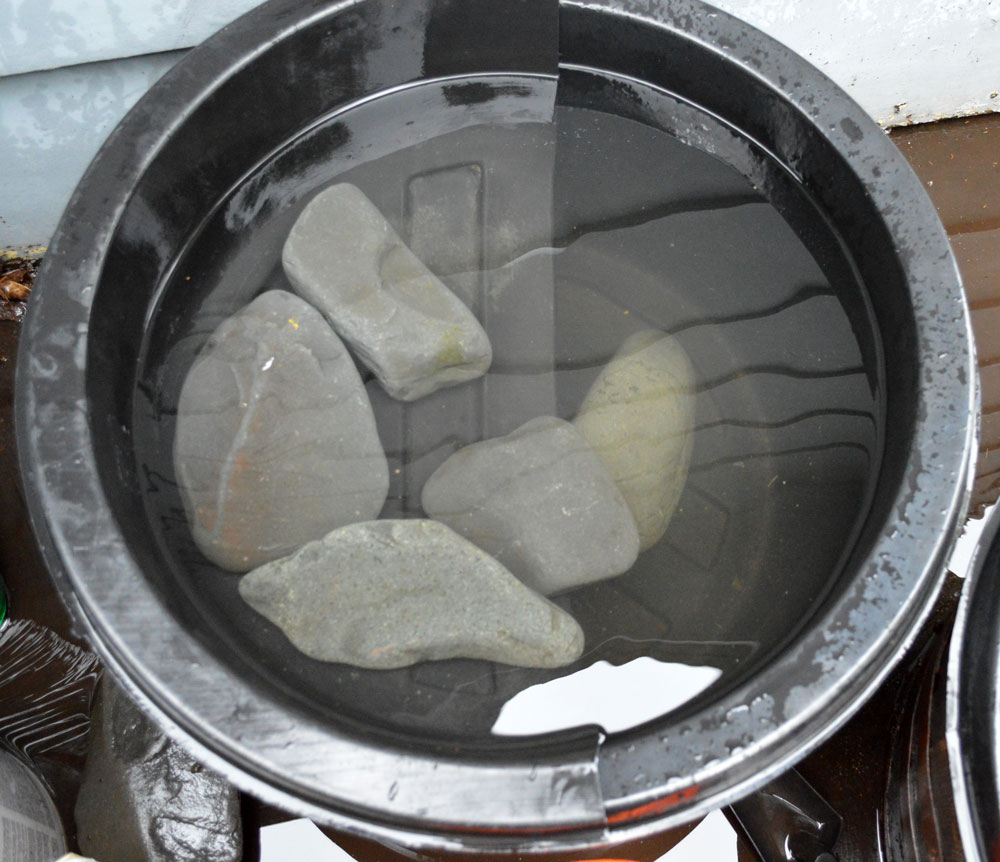
Now, the bottom sagged substantially. Adding more than a few rocks caused them to slide off and fall to the bottom.
Yes, I had clearly gone too far. My shelf wasn’t going to work quite the way I had anticipated. But I’ve learned that when you’re doing something yourself, you need to be a problem solver.
A Shelf Support Group
The solution was remarkably easy: I just needed supports underneath the shelf. Two sections of PVC pipe cut to the right length quickly proved they could be wedged into place and would prevent the “front” face of the shelf from sagging under the weight.
So, functionally this works, but the last thing I want to see when looking down into my pond is glaring white PVC pipes. I owe my marine breeder crowd for the knowledge that Krylon’s Fusion for Plastic® spray paints readily bond with PVC, are completely waterproof, and aren’t toxic to fishes!
Yes, this is going to work!
Coming in Part II
Stick around for the next installment, when I reveal the initial design of the shelf pond, and discuss the plants and animals intended for the ponds.

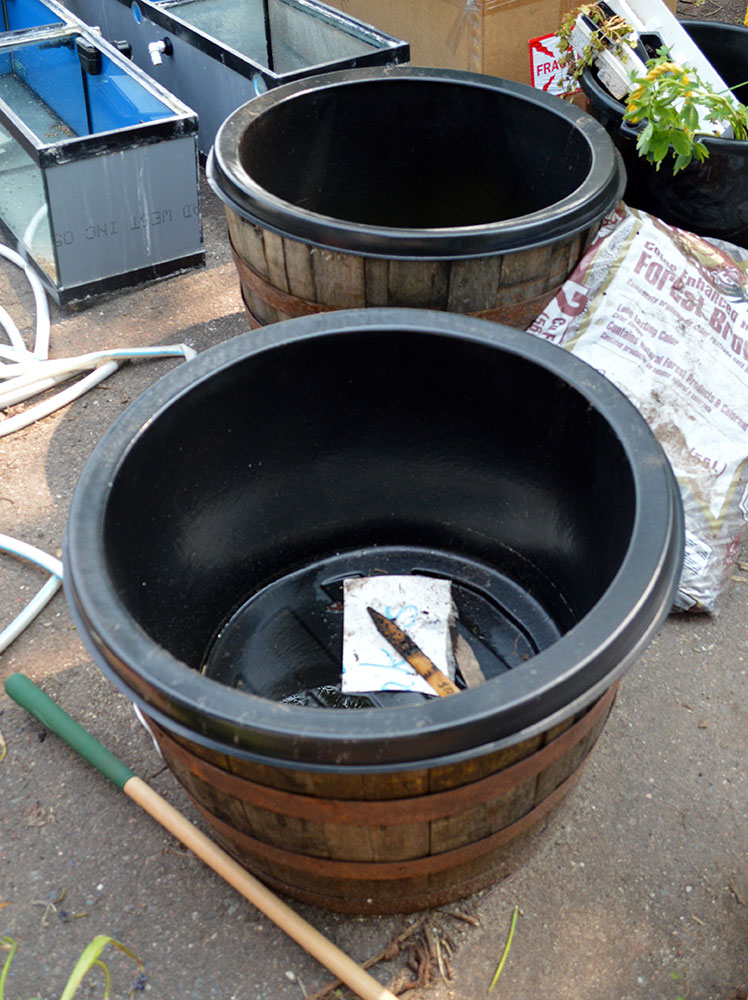
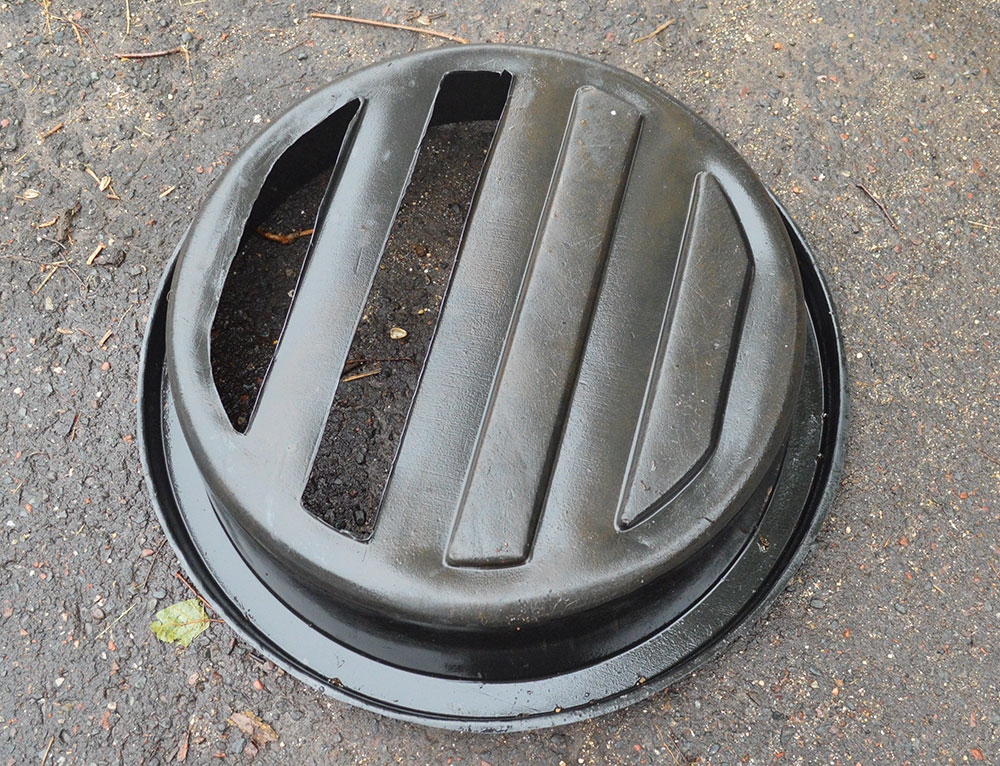
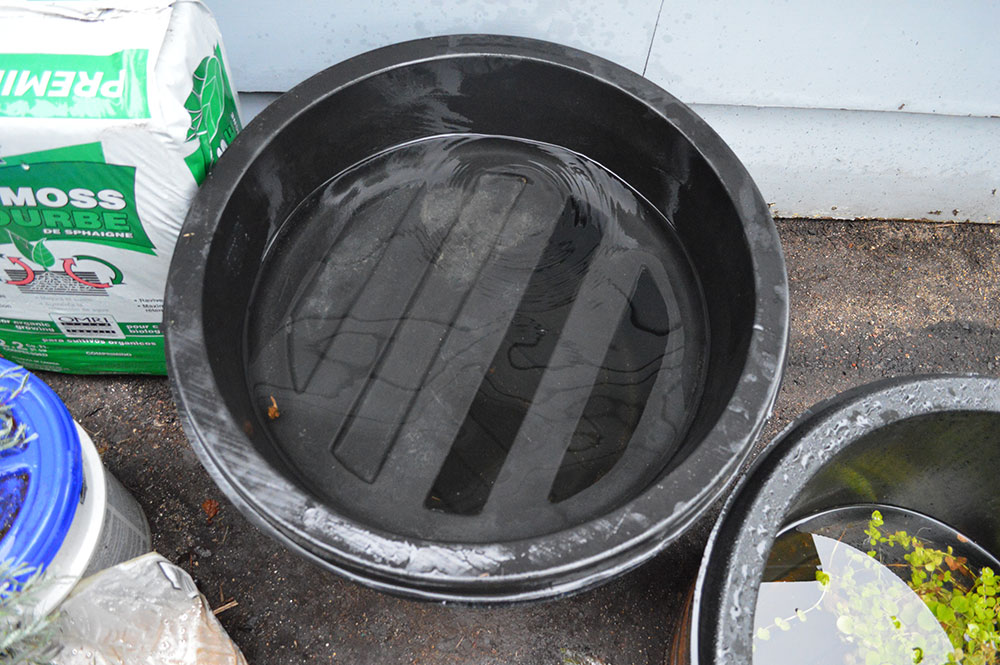

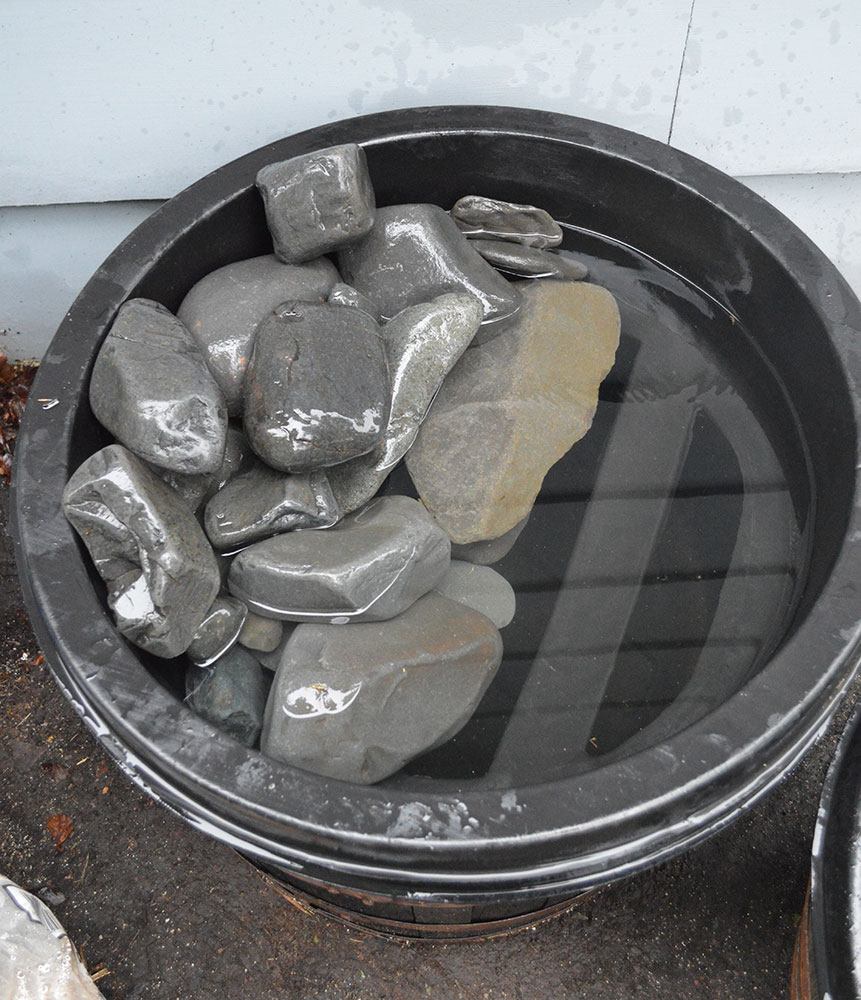
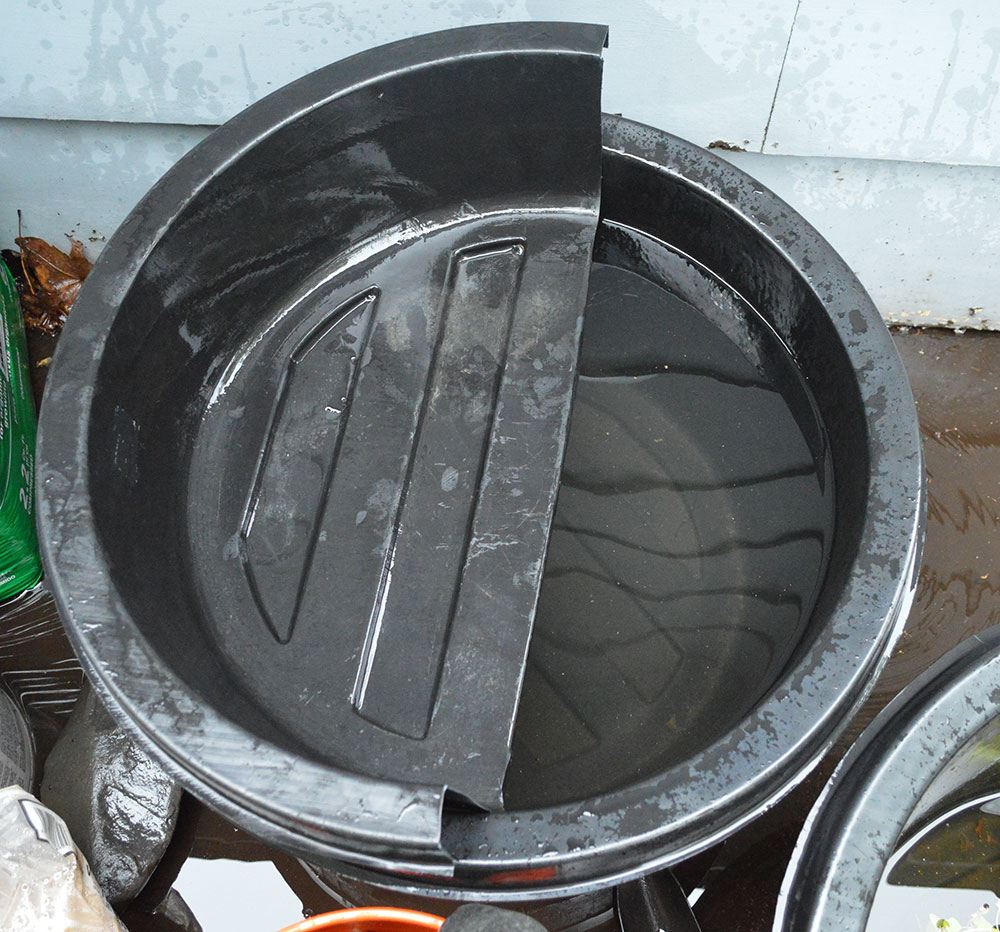
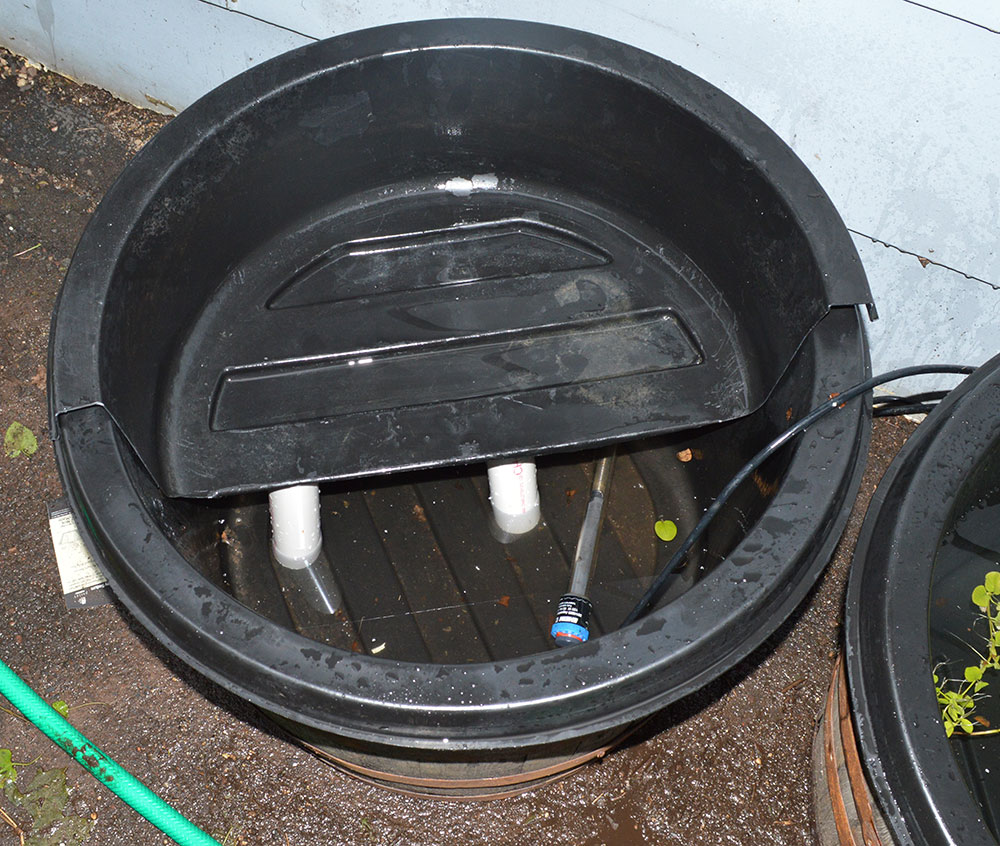
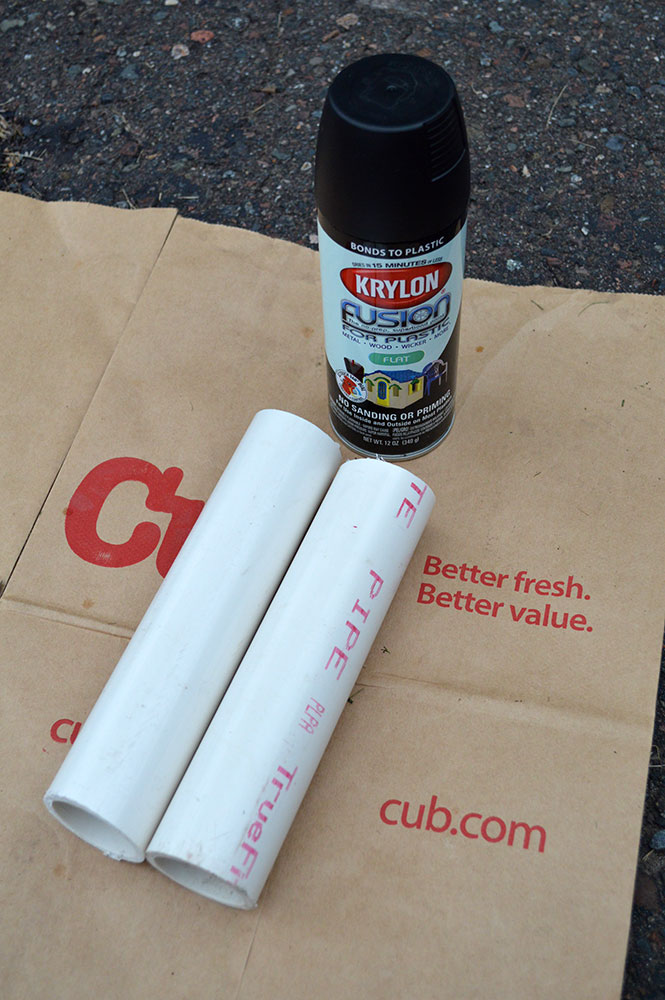
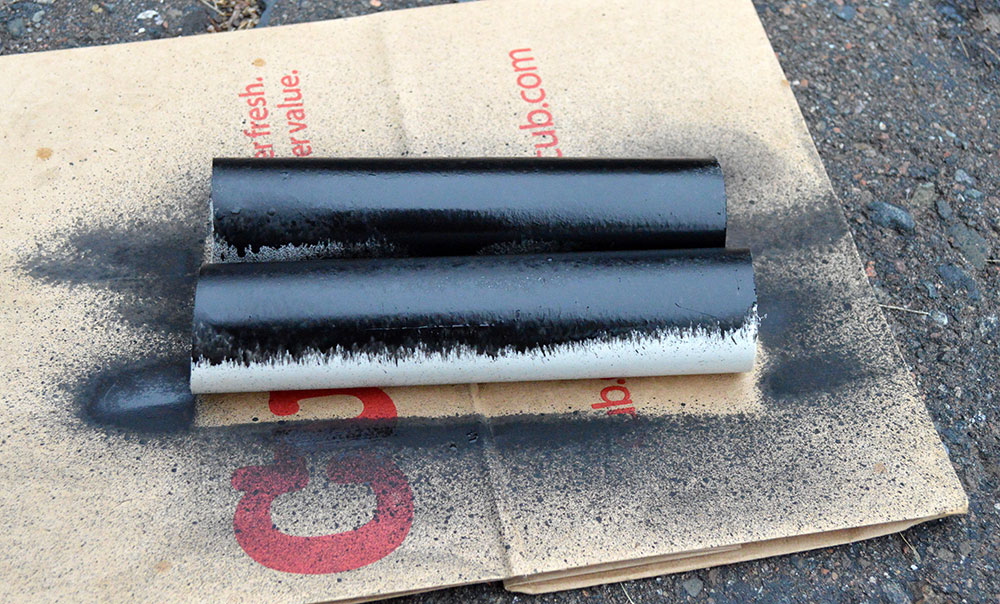
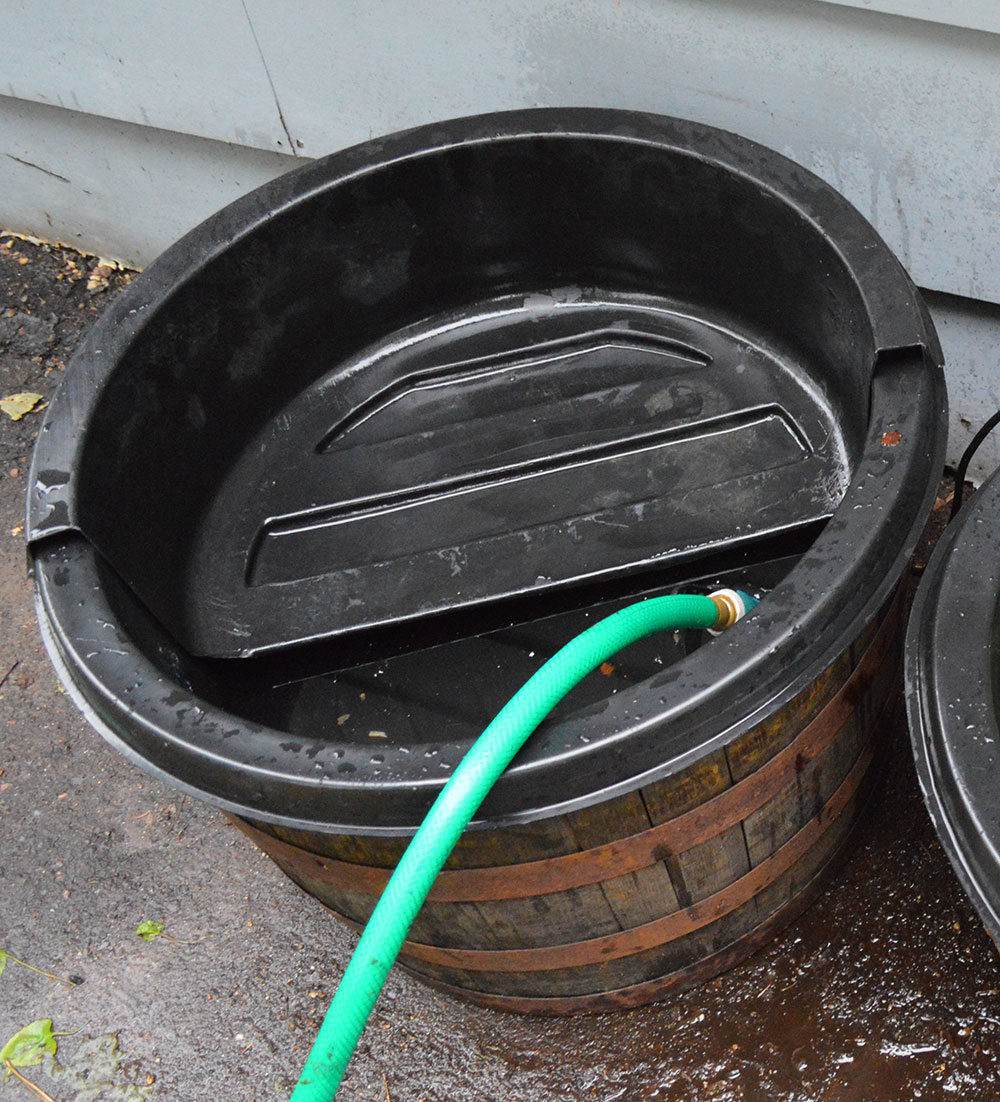





Trackbacks/Pingbacks